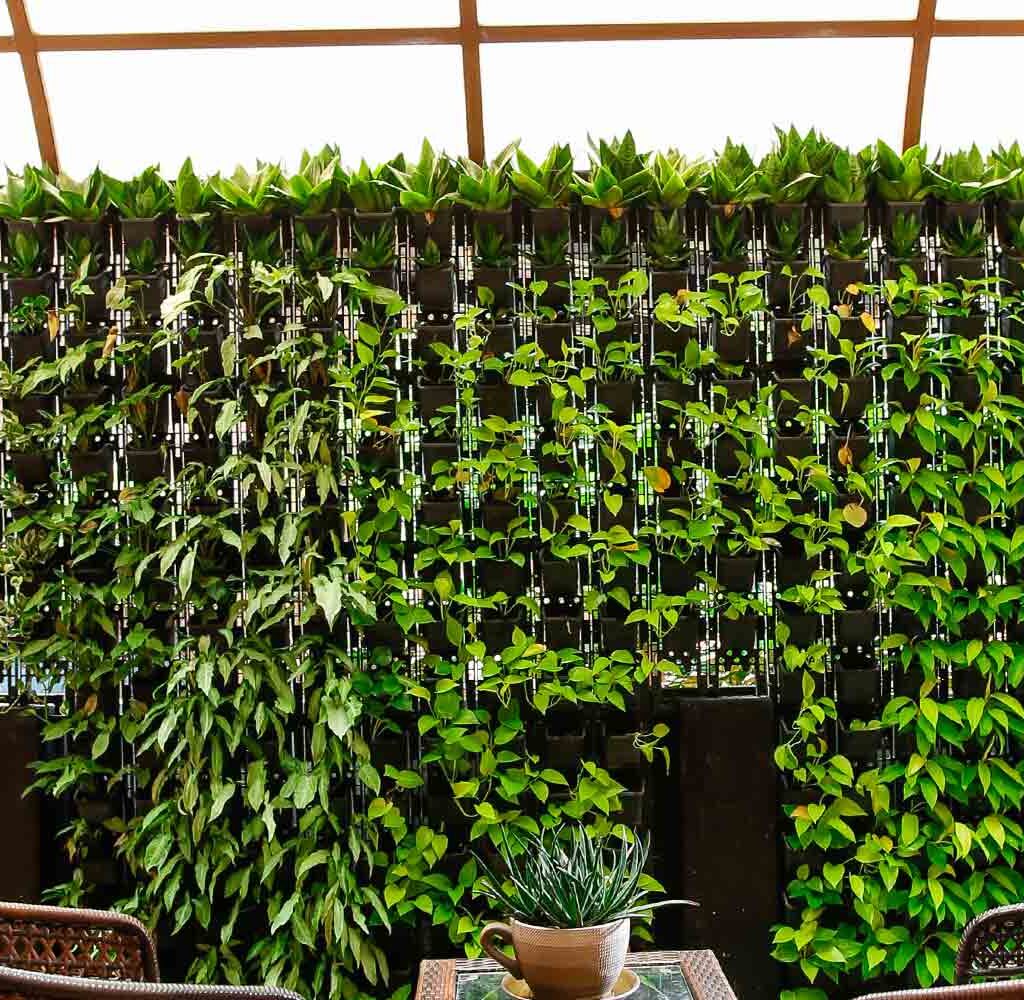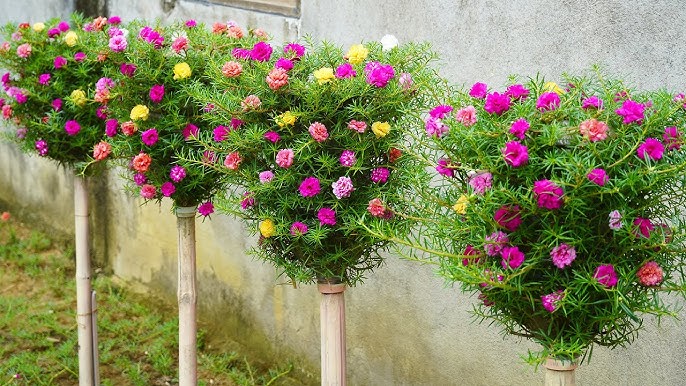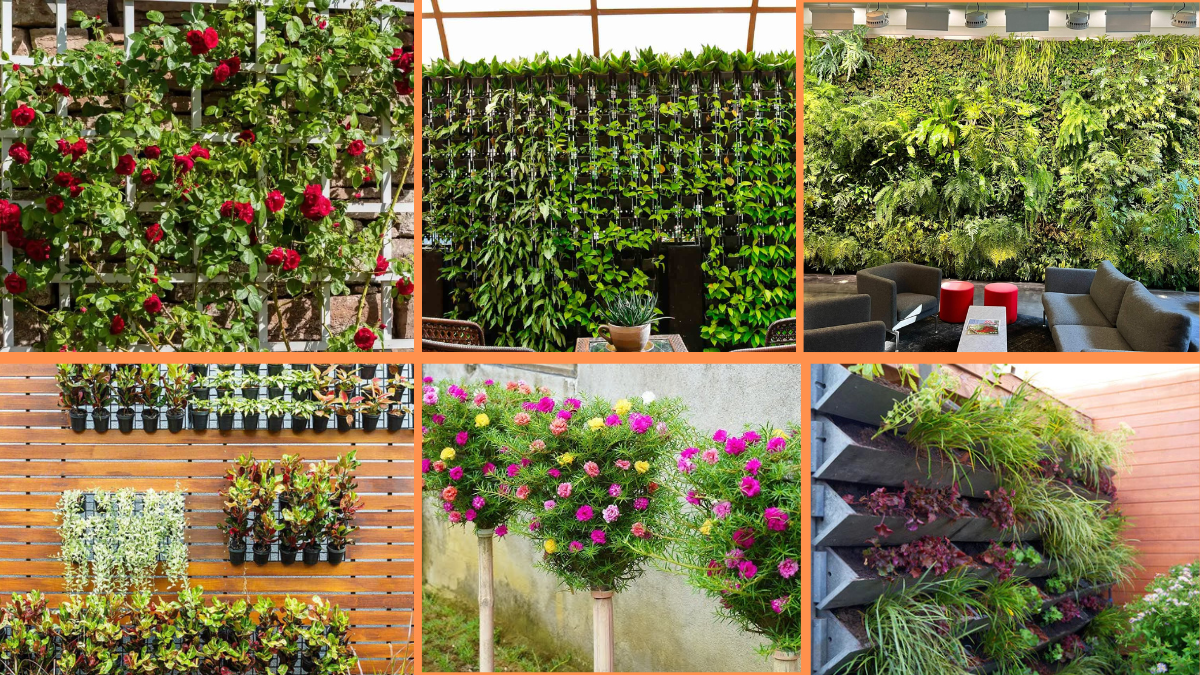Limited on garden space? Dreaming of a lush, colorful retreat without the luxury of a sprawling backyard? Vertical flower gardens are the perfect solution! Whether you have a small balcony, a compact patio, or a modest garden plot, a vertical garden lets you maximize your growing area while adding a stunning visual element to your outdoor (or even indoor) décor.
In this guide, we’ll walk you through 10 practical and creative tips to create your very own vertical flower garden — perfect for beginners and seasoned gardeners alike. From choosing the right plants to clever DIY ideas and maintenance advice, this article will help you build a vibrant, space-saving floral sanctuary.

What is a Vertical Flower Garden?
A vertical flower garden is a garden structure that allows plants to grow upward, using walls, trellises, shelves, frames, or hanging systems instead of spreading horizontally on the ground. It’s a stylish, space-efficient way to display a variety of flowering plants while adding natural beauty to walls, fences, and balconies.
Why choose a vertical flower garden?
- Maximizes limited space.
- Improves air quality and insulation.
- Creates living art pieces.
- Keeps plants accessible and organized.
- Ideal for renters or urban dwellers.

1. Choose the Right Location
The success of your vertical flower garden depends largely on where you place it. Consider sunlight, wind exposure, and ease of watering.
Key factors to consider:
- Sunlight: Most flowering plants require 6–8 hours of sunlight daily.
- Wind protection: Secure delicate blooms from harsh winds.
- Accessibility: Make sure you can reach all areas for watering, pruning, and maintenance.
Great spots for vertical gardens:
- Sunny balcony walls
- Garden fences
- Patio trellises
- House exteriors
- Porch sides
- Indoor sunlit corners

2. Pick Suitable Flowering Plants
Not all plants thrive vertically. Choose flowers that suit your climate, light conditions, and vertical gardening setup.
Top picks for vertical flower gardens:
- Trailing blooms: Petunias, nasturtiums, sweet alyssum, calibrachoa
- Climbers: Morning glories, clematis, jasmine, climbing roses
- Compact growers: Marigolds, pansies, begonias, impatiens
- Ornamental foliage: Ferns, ivy, coleus for textural contrast
Tip: Mix plants with various heights, bloom times, and colors for a dynamic, layered look.

3. Select the Right Structure
There are countless ways to build a vertical flower garden — from ready-made options to creative DIY ideas. Pick one based on your available space, budget, and style preference.
Popular vertical garden structures:
- Wall-mounted planters
- Hanging baskets
- Vertical wooden pallets
- Trellises or lattice panels
- Tiered plant stands
- Repurposed items: old ladders, shoe organizers, tin cans, rain gutters
DIY Idea: Attach recycled mason jars to a wooden board and fill them with cheerful blooms like pansies or petunias for a rustic vertical display.

4. Use Quality Potting Mix
Vertical flower gardens demand lightweight, nutrient-rich, well-draining potting mix to support healthy plant growth.
Ideal mix components:
- Peat moss or coconut coir for moisture retention
- Perlite or sand for aeration
- Organic compost for nutrients
Avoid using heavy garden soil as it can compact and hinder drainage in vertical setups.

5. Ensure Proper Drainage
One of the biggest challenges with vertical gardens is avoiding waterlogging. Excess moisture can cause root rot, mold, and unhealthy plants.
How to improve drainage:
- Drill holes in the bottom of containers or planters.
- Use gravel, pebbles, or broken pottery at the base.
- Water slowly to avoid overflow.
- Choose breathable materials like terracotta or fabric pockets.
6. Plan a Watering System
Since vertical gardens dry out faster than ground-level beds, it’s essential to have a reliable watering routine.
Watering options:
- Hand watering: Using a watering can with a long spout for precision.
- Drip irrigation: A low-maintenance solution for larger setups.
- Self-watering planters: Great for balconies or busy gardeners.
- Rainwater harvesting: Eco-friendly and ideal for outdoor displays.
Tip: Water early in the morning to reduce evaporation and fungal risks.
7. Incorporate Fertilizing
Flowers in vertical gardens need regular feeding, as nutrients leach out quickly with frequent watering.
Best practices:
- Use a balanced liquid fertilizer (like 10-10-10) every 2–4 weeks during the growing season.
- Mix slow-release granules into the potting mix at planting.
- Choose organic fertilizers like compost tea, fish emulsion, or diluted worm castings for a natural boost.
8. Mix Textures and Colors
For an eye-catching vertical garden, combine flowers with different shapes, textures, and hues.
Design tips:
- Pair cascading plants with upright growers for a layered effect.
- Use complementary or contrasting colors for vibrant displays.
- Blend foliage plants (ferns, hostas) with flowering species for year-round interest.
Color inspiration:
- Soft pastels for a romantic look.
- Bold reds and yellows for energy.
- Cool blues and purples for a calming vibe.
9. Practice Seasonal Rotation
Keep your vertical flower garden fresh and blooming throughout the year by rotating plants with the seasons.
Seasonal ideas:
- Spring: Pansies, violas, primroses
- Summer: Petunias, marigolds, geraniums, nasturtiums
- Fall: Mums, ornamental kale, pansies
- Winter (mild climates): Cyclamen, snapdragons, violas
Remove spent plants promptly to prevent disease and make room for new blooms.
10. Maintain and Prune Regularly
Vertical gardens need consistent upkeep to stay healthy and beautiful.
Key maintenance tasks:
- Deadhead flowers to encourage continuous blooming.
- Check for pests and diseases weekly.
- Prune overgrown or leggy plants to maintain shape.
- Clean and sanitize containers before replanting.
Tip: Rotate planters occasionally for even sun exposure, especially if one side receives more light.
Final Thoughts: Vertical Gardens Are for Everyone!
Vertical flower gardens aren’t just a trendy gardening hack — they’re a brilliant way to transform plain walls, balconies, and outdoor corners into living works of art. With a little planning, creativity, and care, anyone can create a vertical floral display that adds charm, color, and life to any space.
Ready to start your vertical flower garden? Whether you opt for a DIY pallet wall bursting with trailing blooms or a sleek, modern hanging planter, these 10 tips will help you build a vibrant vertical paradise.



